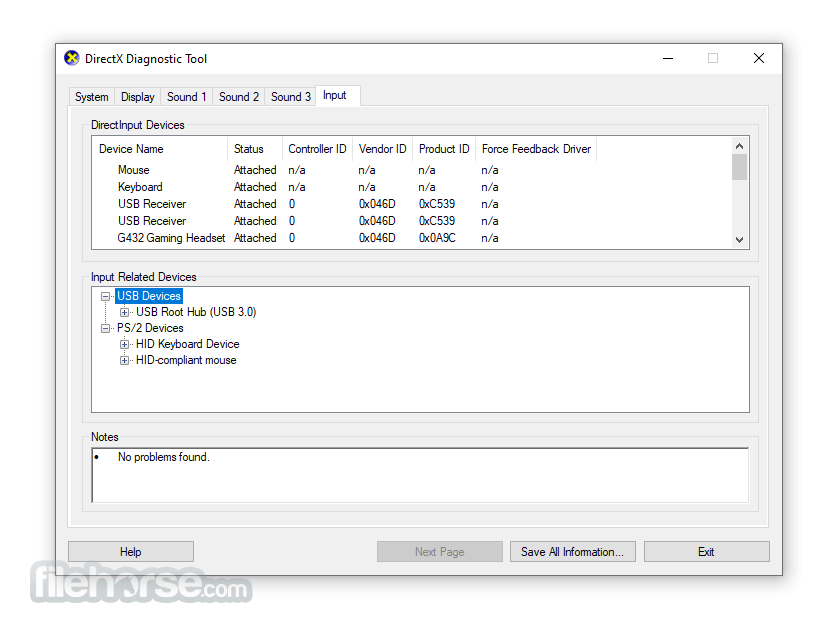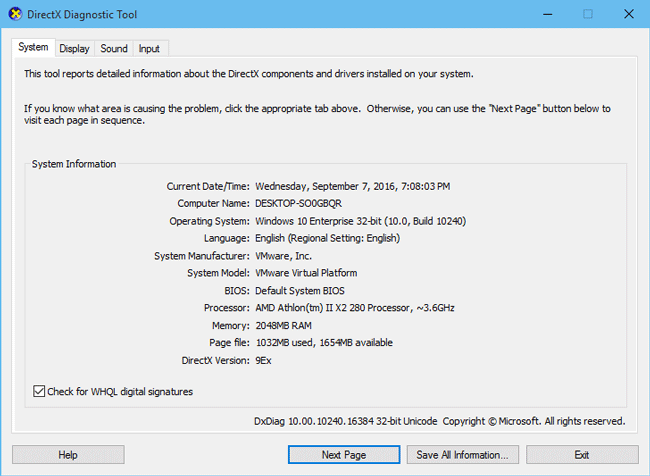
Under the General Tab, click Set Launch Options and a dialog box will appear. You will see a label called “Version” under the “Drivers” heading.įind the game and right-click it, then select Properties. Wait for the program to finish checking your hardware, and then click the “Display” tab.Type “dxdiag” in the text field, and then select “OK.”.Press and hold the “Windows-R” keys on your keyboard.The idea is to use an algorithm that comes up with a unique checksum for each file. Not 100% up to date on AV software, but one approach to take is to take the bytes that make up a file to obtain a checksum (usually a much smaller size than the file). If that button doesn’t appear, move to step 6. When DxDiag opens, check to see if there’s a button that says Run 64-bit DxDiag – if there is click it. Click on dxdiag.exe or dxdiag Run Command in Windows 10.Press the Windows key and type dxdiag in the search box or go directly to the search box in Windows 10.How do I know if I have Dxdiag on Windows 10?


Click OK or the Enter key to open the DirectX* Diagnostic Tool.

In the Open: field of the Run window, type dxdiag.From the Windows desktop, press the Windows and R keys to open the Run window.To extract the dxdiag.txt, click or the topic for details: Windows® 10/11* and Windows 8.1*/8*: The tool can also help determine if your device drivers are up to date. You can use the file when communicating with Intel Support about reporting graphics issues. Use the tool to generate a dxdiag text report file, which has detailed information about your computer's graphics, sound, and other devices. This tool helps you troubleshoot DirectX* related issues.


 0 kommentar(er)
0 kommentar(er)
